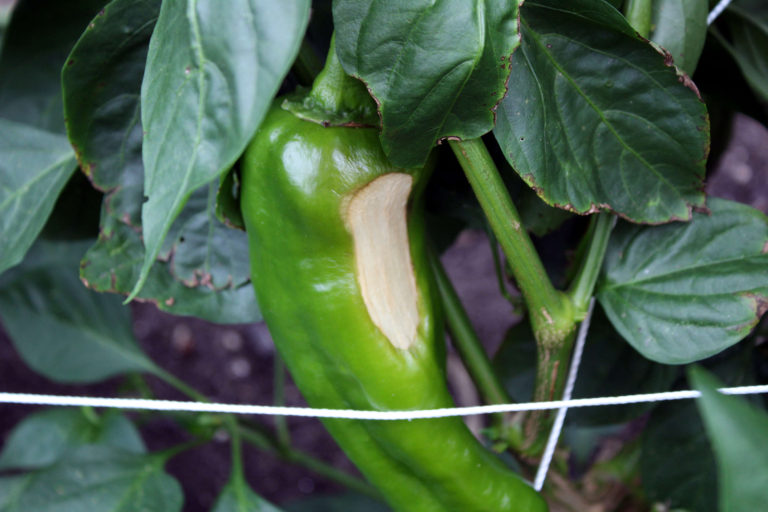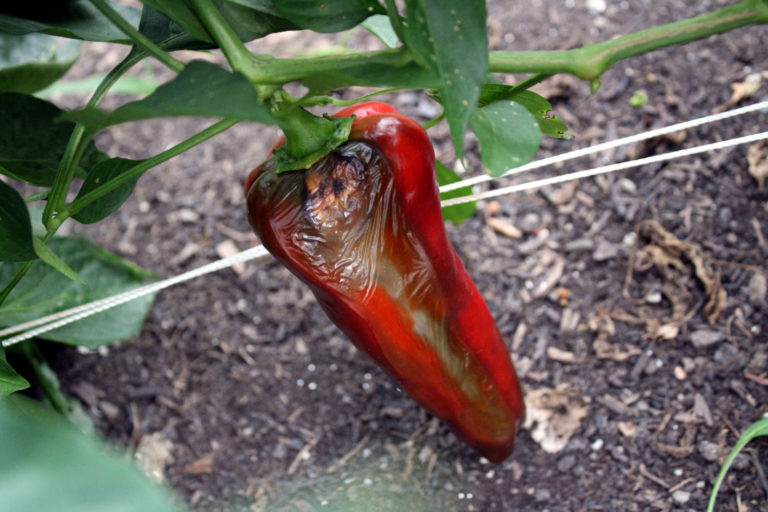Peppers
Selection and Planting
Pepper Varieties
Peppers come in a wide number of varieties from sweet to hot and shapes from bell to pimento. Find the pepper that best suits your tastes.
Planting sweet and hot peppers next to each other will not affect the final peppers produced by each plant. However it is likely the resulting seed will not reflect either of the varieties planted. Take care when saving seed from a pepper plant in the proximity of different varieties.
Planting
Peppers in Rose Tree Garden should always be grown from healthy transplants purchased from reputable garden centers or grown under lights from seed. If you are new to gardening, no not try growing plants from seed. Never try starting pepper plants from seeds in the garden.
Plants shouldn’t be transplanted into your garden before the 1st of May. Wait until the nightly temperature forecast for the next week remains above 50 degrees. Planting pepper too early may result in stunted growth and reduced harvests.
Spacing of pepper plants should fall around 24 inches for most pepper plants found in garden centers. For those who are planting pepper plants that are over a year old, spacing should be increased to at least 36 inches. Proper spacing will allow for adequate airflow around the plants which will reduce the likelihood of pest and disease issues later in the season.
Before transplanting, remove the bottom few sets of leaves on the plant and bury it slightly deeper. Because peppers can grow new roots from buried stems, this may result in stronger plants later in the season. Water the plant well.
Growing Peppers
Pests
Peppers are susceptible to a number of pests. Regularly check the plants for signs of insect damage. Be aware of the pests that frequent peppers and use the links below to determine the best ways to control them.
Diseases
Pepper plants can be susceptible to a variety of diseases but, for the most part, plants contain natural resistance to them. However, care still must be taken to ensure plants are healthy throughout the growing season. Care must be taken to prevent diseases before they are able to take hold. Below is a list of three steps you can take to improve your chance of growing healthy pepper plants
- Plant spacing: Pepper plants that are positioned too close together will result in higher levels of humidity near the leaves due to air not being able to move between the plants. Making sure to give plants plenty of space will improve airflow and reduce the likelihood of disease
- Watering: Never water your pepper plants by spraying the leaves. Always water carefully at the base of the plant in order to limit the chance of dirt splashing up on the leaves. This splashing is the main way diseases enter the plants.
- Crop rotation: A number of plant diseases come from a slow buildup in the soil over a period of time. Crop rotation (not growing plants in the same place every year) will keep the amount of soil disease low. Every year, move your plants to a different part of your garden that hasn’t hosted peppers for the past 3 years.
Peppers suffering from sunscald have thin white flesh on the side of the pepper that faces the sun. Note: sunscald is a cultural problem and not a disease.
Ripe peppers with sunscald will have thin, multi-colored skin on the side that faces the sun. Note: sunscald is a cultural problem and not a disease.
Watering
Maintaining consistent soil moisture levels will improve plant growth and reduce the likelihood of fruit developing blossom end rot. Monitor both the soil moisture and rainfall using the Rose Tree Garden Weather Data and water your plants when soil moisture decreases or the garden has not received at least 1″ of rainfall in the past week.
When watering, be sure to avoid overhead sprinkling as this increases the likelihood of soil-borne diseases spreading to the plant. Water slowly at the base of the plant over a period of an hour to encourage deep root growth. Long and infrequent watering encourages the plant to focus on root development which will enable it to survive through periods of drought.
Weed Control
Keep area under pepper plants clear of weeds to prevent competition. Use a garden hoe or hand pulling to remove the weeds. Reduce the weed pressure by following our Weed Prevention suggestions.
Harvesting
Peppers should be harvested when fruit has reached the desired color. All peppers will ripen to a color beyond green, even for those that are traditionally eaten green such as jalapenos. A fruit that is fully ripe will be sweeter than one that was picked green. Specific varieties of peppers may be picked differently than others.


